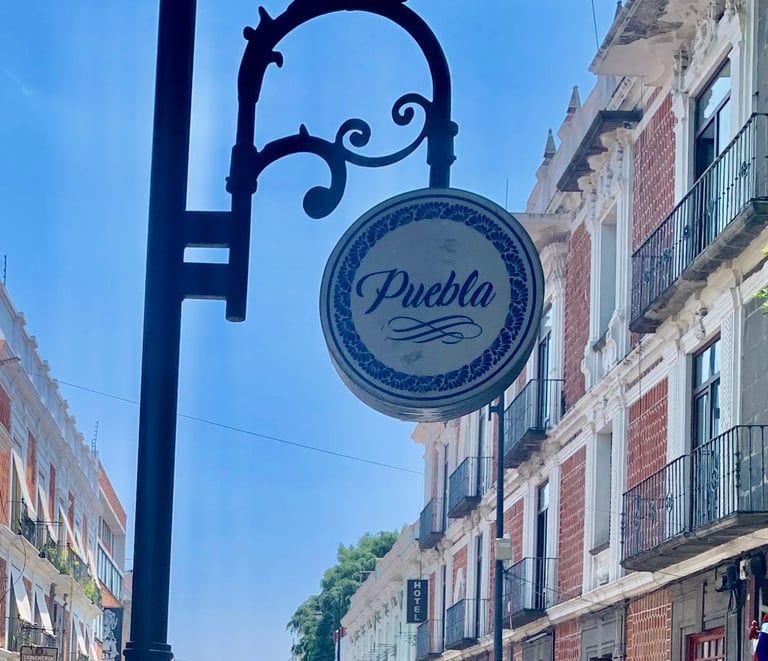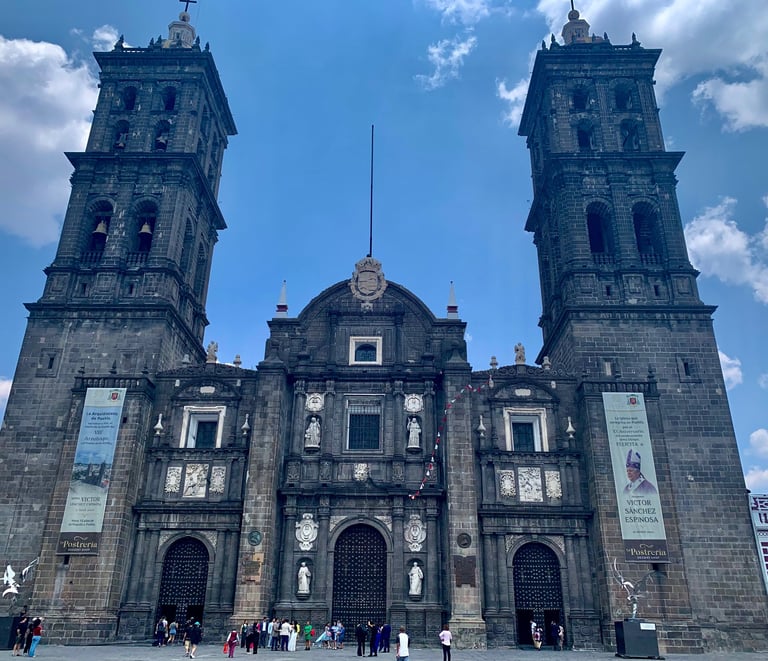Things to Know Before You Go to Puebla, Mexico
PUEBLA, MEXICO


Puebla Should Be on Your Radar
Puebla is the capital of the Puebla State in Mexico, and the fourth largest city in Mexico, after Mexico City, Monterrey, and Guadalajara, with a population of around 3.4 million. The city is only about two hours drive from Mexico City and easily accessible by bus.
Founded in 1531 by the Spanish, this city is one of the oldest in Mexico and is the first Spanish settlement in Mexico that did not involve settling on an existing Indigenous city-state. Puebla was an important city for Spain because it was midway between the main port in Veracruz and the Capital of Mexico City.
In 1987, Puebla’s Historic Center was designated a UNESCO World Heritage Site due to its history and architecture.Today, Puebla is known nationally and internationally for its history, architecture and art, as well as for being one of the food capitals of Mexico. I think Puebla remains one of the most underrated cities in Mexico.
I highly recommend a visit!
Check out the Wander Yonder YouTube video embedded below for an overview of Puebla, including highlights related to its history, architecture, art and food.
Puebla is Located at High Altitude
Puebla has an average altitude of about 2100 meters (7000 feet) above sea level. Upon arrival, you may experience symptoms of altitude sickness, such as shortness of breath, tightening of your chest, headache, dizziness, nausea, fatigue, problems with sleep and loss of appetite. Symptoms usually begin within 12 to 24 hours of reaching higher elevation and get better within a day or two after your body adjusts to its new altitude. This was my experience initially.
In higher elevations, your body needs to work harder to maintain blood oxygen levels, increasing your respiration rate and leading your body to lose water faster than at sea level. Your risk of dehydration increases significantly. Places at higher altitude also have lower humidity, compounding the risk for dehydration. Drinking more water than usual is very important to alleviate symptoms and prevent dehydration. Health experts suggest increasing your water intake by an additional 1 to 1.5 litres for a total of 3-4 litres a day.
Where to Buy Clean Drinking Water
Most people know that tap water is not safe to drink in most parts of Mexico. However, many new visitors don’t know that you can buy refillable 5, 10, and 20 litre bottles at many local tiendas (small convenient shops). There are water purification stations in almost every neighbourhood so you just need to find the one that is closest to you. Refill your bottle for a fraction of what it would cost if you continually bought smaller bottles or water. Just type in agua purificada or agua purificadora or simply purificadora into your google maps to find the nearest purification station. You will save about 75 percent on your drinking water costs and also limit your plastic waste.
Puebla is Generally Safe and Friendly
I stayed in the Historic Centre of Puebla and never felt unsafe during the day or at night during my month-long stay in the city. However, extra precaution should always be taken at night to avoid being alone on dark and empty streets. In addition, a neighbourhood north of the Historic Centre that locals recommend taking extra precaution while visiting during the day (and to avoid at night) is called Xanenetla - something to keep in mind if you wish to visit the underground network of historic tunnels located in this area.
I found Poblanos to be some of the friendliest people that I have encountered during my many travels throughout Mexico. The city does not receive a lot of gringo tourists, digital nomads or expats so it has not (yet) experienced over-tourism like many other cities, along with soaring prices for locals that can fuel resentment toward visiting foreigners. In addition to being one of the friendliest cities, Puebla is also one of the most affordable places I've visited in Mexico. Accommodation options, activities, and eating and drinking out in local restaurants and bars are easy on the pocketbook.
Although Puebla is generally a safe and friendly city, with low cartel activity, it does experience crime, including armed robbery, purse snatching and pickpocketing. Be mindful of your belongings and surroundings at all times - and avoid doing anything that will make you a target, including wearing expensive jewellery, or flashing your expensive phone or camera in public, particularly while you are outside of the Historic Centre. In the main parts of the Historic Centre around the main plaza, you don't have to worry as much and you will see many tourists with their phones and cameras out in public. Stick to the main areas around the main plaza and Historic Centre and you will be fine.
Further Reading
You may also be interested in reading the following related Wander Yonder blog posts:



